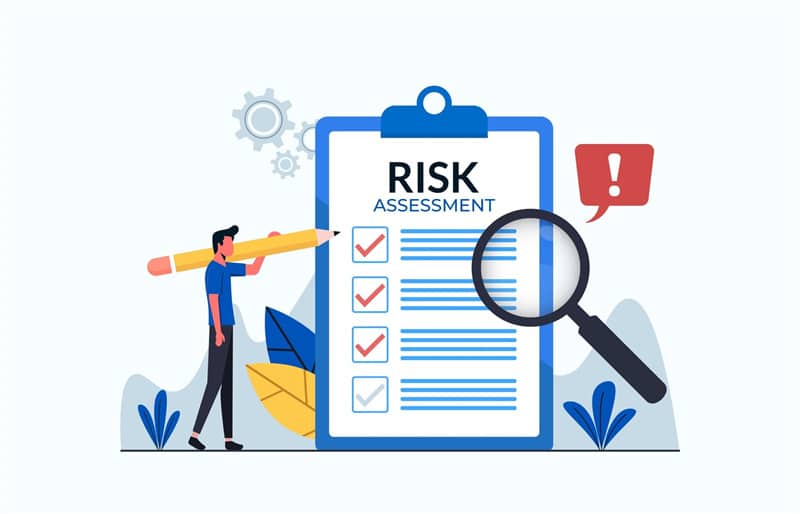
In today's digital world, the threat of cyberattacks on businesses has become exceedingly common and high-stakes.
It's essential for companies of all sizes to protect themselves from these rising threats by implementing effective cybersecurity strategies. In this article, we list some of the top cybersecurity strategies that can help keep your business safe from cyber criminals without breaking the bank. Buckle up for our deep dive into the digital defenses that will help your business stay one step ahead of the cyber crooks!
Risk Assessments

The first step to building a solid cybersecurity strategy is understanding your business's risk landscape. Conducting a thorough risk assessment involves identifying and evaluating potential risks and vulnerabilities in your IT systems. This process can help you prioritize resources and develop a data protection plan tailored to the unique needs and threats facing your business.
Perform an inventory of all technology assets, including hardware and software, and identify potential threats, such as phishing attempts, malware infections, and data breaches. Evaluate the potential impact of each threat on your business operations, then document and maintain your risk assessment, updating it regularly as your business evolves.
Securing Your Network
A strong network is the backbone of your cybersecurity infrastructure. It's essential to implement proper security measures to protect your network from unauthorized access and intrusions. Deploy strong firewalls to safeguard your network from malicious traffic and use secure network configurations, including virtual private networks (VPNs) for remote access. Prevent unauthorized access by implementing strong password policies and enabling multi-factor authentication (MFA). Remember to regularly monitor and update network equipment, such as routers and switches, to ensure the latest security protections are in place.
Having a professionally managed IT Services team on board can also greatly enhance your ability to monitor and properly secure your network. These experts can provide round-the-clock monitoring and support, ensuring that your organization's security posture remains resilient and effective against threats.
Continuous Cybersecurity Training
Good cybersecurity doesn't end with technology; it also involves training and educating your employees to recognize and respond to threats. Cybercriminals often exploit human vulnerabilities, so it's crucial to educate your staff about the latest trends and tactics in cybercrime.
Provide ongoing training on the basics of cybersecurity, including phishing attacks, password management, and secure browsing habits. Conduct regular security awareness sessions to keep cybersecurity best practices fresh in employees' minds, or host simulated phishing exercises to allow employees to practice identifying and reporting potential threats. Encourage a culture of open communication, where employees can report suspicious activities without fear of retribution.
Responding to Security Incidents
Despite your best efforts, it's likely that your business will experience a cybersecurity incident at some point. The key to minimizing damage is to detect and respond to these incidents quickly and efficiently.
Consider establishing a security operations center (SOC) or hiring a managed security service provider (MSSP) to monitor your network for signs of intrusion. Develop a solid incident response plan outlining the steps to take in the event of a security breach, including communication, containment, and recovery strategies.
Regularly test and update your incident response plan to account for changes in your IT environment and the evolving threat landscape. Review logs and system events regularly to detect and investigate anomalies that may indicate a security incident.
Developing a Strategy

Endpoint devices, such as laptops, smartphones, and tablets, represent attractive targets for cybercriminals, as they often contain valuable data and can provide an entry point into your network. A robust endpoint security strategy is essential to protect your data and reduce the risk of compromise.
Implement endpoint protection software, such as antivirus and anti-malware solutions, to defend devices from known threats and ensure all devices have the latest security patches and updates installed. Restrict user access to sensitive data by implementing the principle of least privilege. Encrypt data stored on endpoint devices to protect against unauthorized access and data theft.
Conclusion
Navigating the complex world of cybersecurity may seem daunting, but implementing proper strategies can help protect your business from the majority of cyber threats. Remember, cybersecurity is an ongoing process and not a one-time investment, so keep evolving and refining your strategy to stay ahead of the ever-changing cyber landscape.










